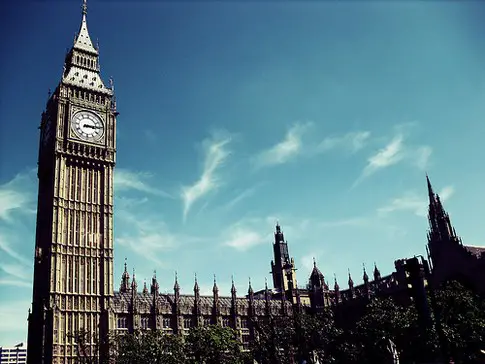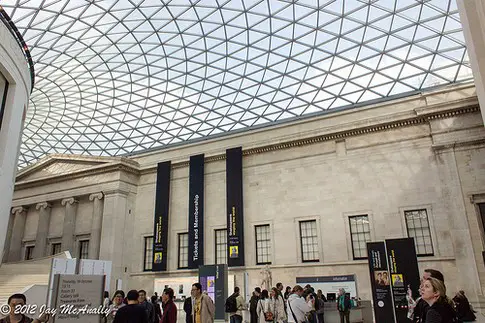London City Guide
London. A city so big and vibrant that it is hard to sum it up in a single article. The capital is home to the biggest and most ethnically diverse population in Europe (over 8 million people and 270 nationalities) and there is simply so much to see and do that it would take weeks to explore all of the sights, landmarks, museums and galleries on offer. If you are a first-timer, this guide is for you, giving you the lowdown on the best places to begin your quest.
Places to visit
Westminster: With most of the major sights within a half-mile radius, Westminster should be at the top of any tourist’s agenda. This area is famously the home of the Houses of Parliament and Big Ben with their much older brother Westminster Abbey just across the road. Also nearby is the constantly packed Trafalgar Square, which contains Nelson’s Column and the beautiful church of St Martin-in-the-fields.
West End: If retail therapy is your thing then the West End is the place to be. Massive clothes shops and department stores line Oxford Street and cater for the hordes of fashion-conscious Londoners and tourists each day, while swinging Carnaby Street is home to the trendiest boutiques. Some of the city’s best nightspots can be found around Soho, where gay bars, strip clubs and numerous Chinese restaurants all battle for your British pounds.
South Bank: The stretch of bars and attractions on the south bank of the Thames between London Bridge and Waterloo is always a fun place to head on a sunny afternoon. Here you will find Shakespeare’s reconstructed Globe Theatre, Tate Modern and London Eye, along with tons of street performers singing and juggling their way into your heart.
The City: Often overlooked by tourists, the City may be London’s financial heartlands but it also has a lot else to recommend it. The Tower of London, St Paul’s Cathedral and Tower Bridge are all within spitting distance, while old-fashioned pubs and a futuristic ‘Blade Runner’ skyline round up an interesting part of town. It is easy to forget that the ‘Square Mile’ once was London before the city expanded outwards to merge with Westminster. The best time to visit is during the week when it is a hive of activity. At the weekend it turns into a ghost town when the bankers go home.
Shoreditch: Once a grotty mix of shoe manufacturers, brothels and council flats, Shoreditch has undergone something of a renaissance in recent years to become one of the best places for a night out. Old Street and Kingsland Road are jam-packed with uber-cool bars and nightclubs, while Brick Lane is the place to head for a curry and some vintage threads. Also on your Shoreditch itinerary should be Hoxton Square with its nice beer gardens and White Cube gallery (where Tracey Emin and Damien Hirst first made their name).
Accommodation: The Corus Hotel Hyde Park (www.hotelclub.com/Corus-Hotel-Hyde-Park-London) offers luxury 4-star accommodation close to Oxford Street in a stunning Georgian building. A great place to stay in Shoreditch is the award-winning Hoxton Hotel (www.hoxtonhotels.com) with meeting rooms, a restaurant and easy access to the hippest parts of town. Other London accommodation ideas can be found at HotelClub (www.hotelclub.com/United-Kingdom/London-hotels).
Free attractions
Want to explore London but don’t want to break the bank? The good news is that many of London’s best things to do are completely free! Here are the most popular (based on visitor numbers from 2010).
1. British Museum: The British Museum is a veritable treasure trove of artefacts from different cultures and traditions dating back to the dawn of mankind. Its collection numbers some 8 million objects, including the Rosetta Stone, some pretty scary ancient Egyptian mummies and the Lindow Man (an Iron Age body found in a peat bog). The beauty of the British Museum is you can pop in for 20 minutes, see a few exhibits, and then pop out again because it is free!
2. Tate Modern: Set in the stylish Bankside Power Station overlooking the Thames, Tate Modern is a must-see for modern art fans (19th century to the present day). You will need to buy a ticket for their brilliant retrospectives of individual artists, but the permanent exhibitions are free. Artists permanently on display include Picasso, Matisse and Warhol, arranged thematically in exhibitions such as ‘Poetry and Dream’ which charts Surrealism and its legacy.
3. National Gallery: For those who prefer their art a little more traditional, the National Gallery has it all. Featuring iconic works from van Gogh, Rembrandt and Velazquez, this grandiose building is home to the most impressive collection of 13th to 19th century European painting in the world. The best time to visit the gallery to avoid the crowds is on a weekday during the day or Friday evenings, when the gallery is open until late.
4. Science Museum: A favourite among kids and adults alike, the Science Museum lets you see, touch and experience the major scientific discoveries of the last 300 years. Learn about how steam engines work, the effects of mankind on the environment and how we put a man on the moon. ‘Exploring Space’ is particularly fascinating, where you can come face to face with real-life space rockets, probes and spacesuits and cannot help wondering how they did that. Be sure to also check out the massive IMAX cinema in the basement.
5. Victoria & Albert Museum: The Victoria & Albert Museum (or V&A for short) is much more than just an art gallery, displaying textiles, ceramics, metalwork and other types of art and design from the last 5,000 years. One of the highlights is the Ardabil Carpet, while the East Asian and Islamic collections are the best of their kind in Europe.
Getting around
The best way to get around in the early days is by Tube. Not only is the London Underground quick and relatively cheap, the beautiful simplicity of the Tube map should ensure that you never get lost. The network is divided into 6 zones, and prices vary depending on which zones you are travelling between. The most cost-effective payment option is usually an Oyster Card, London’s pre-pay swipe card (visitorshop.tfl.gov.uk/oystercard/product/oyster-card). But if you are making a lot of journeys in one day, a Travelcard might be worth it.
Photos: Big Ben by Amanda Amaris@flickr, British Museum by JayMac3@flickrWritten by Matt Lindley


